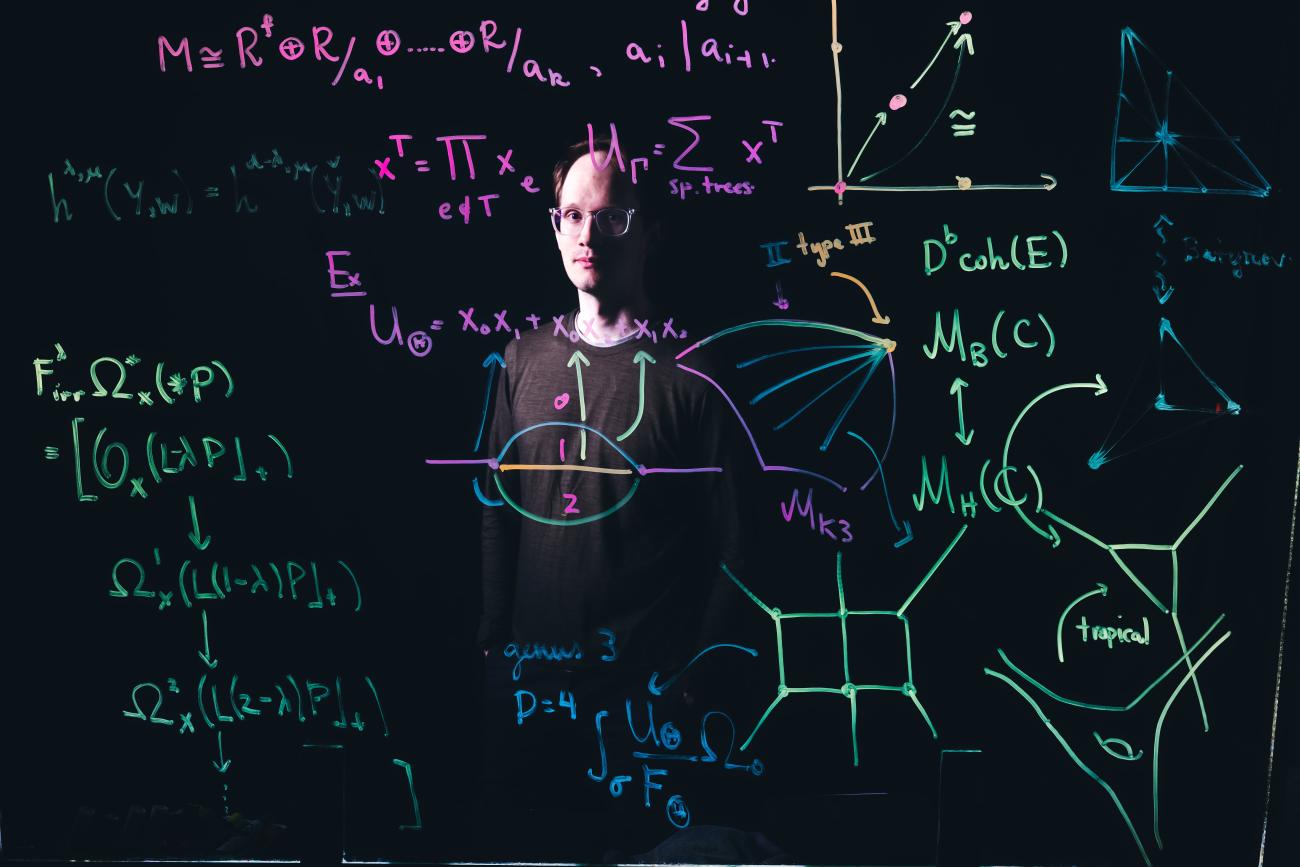Algebraic Geometry and the Shape of the Universe
The Research Trajectory of Andrew Harder
Algebraic geometry is one of the most abstract and far-reaching areas of modern mathematics, with strong connections to other fields. For researcher Andrew Harder, it offers both a framework for mathematical exploration and a link to contemporary physics. His work focuses on Calabi-Yau varieties—complex geometric shapes defined by polynomial equations—that are key to efforts to understanding the universe at its most fundamental level.
At the heart of his inquiry lies a deceptively simple yet far-reaching question: Are there finitely many Calabi-Yau spaces? The implications of this question extend beyond pure mathematics. Calabi-Yau spaces have profound significance in theoretical models that attempt to describe the fundamental structure of the universe. If there are finitely many such spaces, it would suggest that the ways in which the underlying geometry of the universe can be configured are themselves limited, imposing fundamental constraints on the nature of physical reality.
Imagine a shape that, no matter how closely you examine it, appears flat in small regions—much like how the Earth's surface seems flat to someone standing on it, even though it's part of a sphere. Such shapes are called manifolds. A Calabi–Yau manifold possesses unique properties that make it especially interesting in the fields of mathematics and physics. These manifolds possess several mathematical characteristics that make them suitable for modeling the compactified dimensions in physics. The specific geometry of this manifold influences the properties of particles and forces in our universe, making Calabi–Yau spaces crucial for connecting theoretical physics to observable physics.
Harder currently investigates an intriguing feature of Calabi–Yau manifolds called mirror symmetry. This is a phenomenon where two different Calabi–Yau manifolds can lead to parallel physical theories. A key development in his recent scholarship involves the use of Landau-Ginzburg models, a class of mathematical principles that mirror known physical theories. These models offer a dual perspective. By establishing connections between mathematical objects, some better understood than others, researchers can transfer insights from one domain to another.
“It's like you have a correspondence between two different types of objects,” Harder says. “Sometimes, one of these types of objects is easier to study than the other. You study the easier object, then you use the correspondence to go back and gain insight into the [object] that you might've really wanted to explore. “
As his field evolves, so too does Harder’s research agenda. One such shift involves an engagement with Feynman integrals—functions that describe particle interactions in high-energy physics. Though originally tools of physics, these integrals reveal deep mathematical structures. Harder’s recent work shows that certain Feynman integrals can be interpreted as periods of algebraic varieties, firmly situating them within the domain of algebraic geometry.
His paper on so-called “banana graphs”—a term describing a fundamental type of particle interaction—offered one of the first concrete mathematical classifications of these integrals in terms of geometric functions.
“When you have these particles coming in, they split up into different particles, and then they go back together into one particle” Harder says. “One of the more basic types of particle interactions is this sunset or banana graph. We gave a very concrete characterization of the types of functions that appear there in terms of algebraic geometry. I thought it was a very nice answer in the end.”
Looking ahead, Harder sees his work continuing to evolve in dialogue with physics, particularly in contexts where deep structure remains only partially understood. “I’m looking for new places to apply these methods,” he says. As the mathematical landscape shifts, his work remains rooted in the idea that abstract reasoning—when pursued with clarity and curiosity—can clarify the very fabric of the cosmos.

